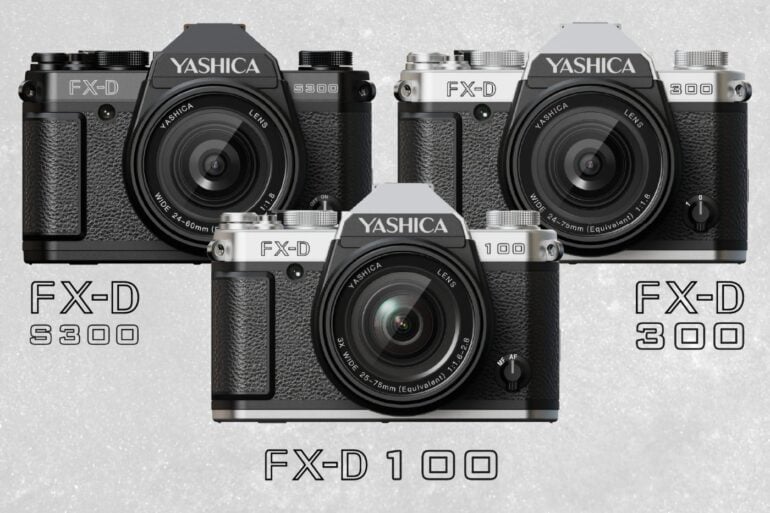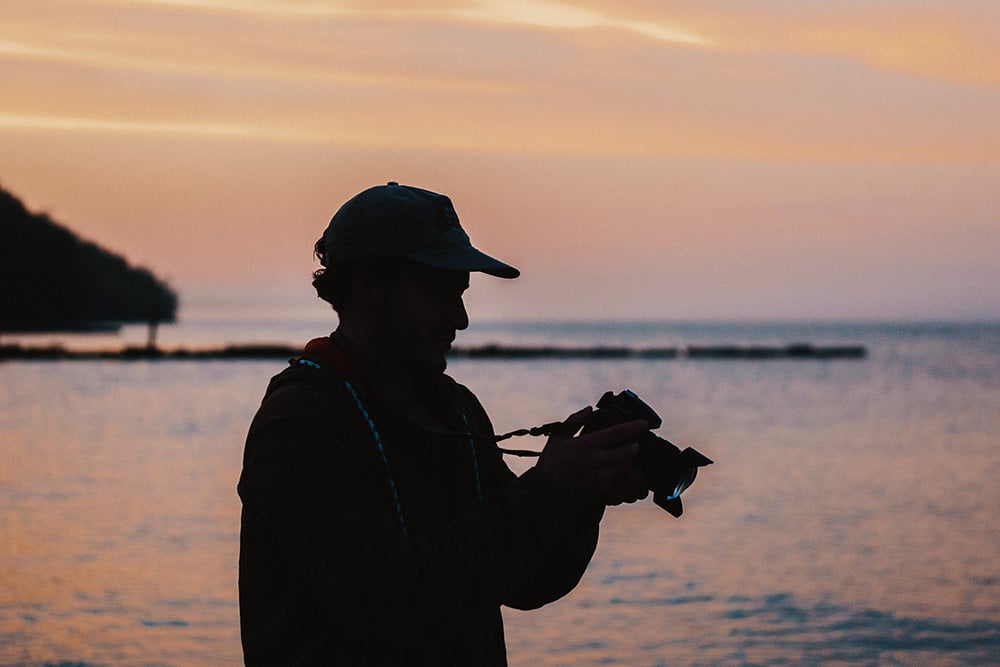Yashica reinvents its FX-D SLRs in a digital version and turns to Kickstarter to fund the project. Offered in 3 versions — FX-D 100, FX-D 300, and FX-D S300 — the series banks on a retro charm and analog experience with the benefits of digital, a trend that seems to be gaining strong momentum.
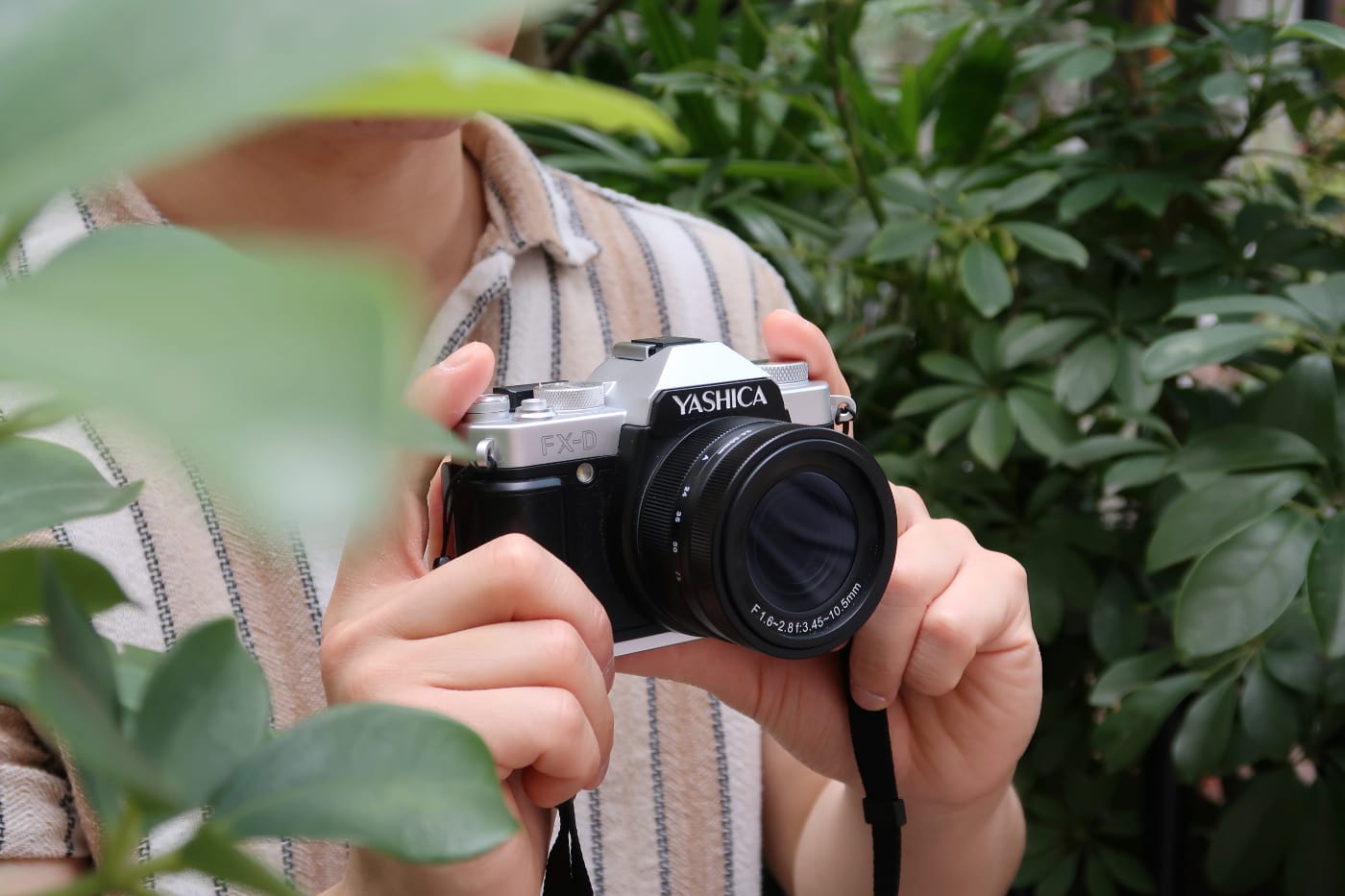
Sommaire
Yashica rides the vintage wave and the FX-D Quartz legacy
Just a few days left to support the Yashica FX-D camera project, whose compact design echoes the look of the namesake analog SLR.
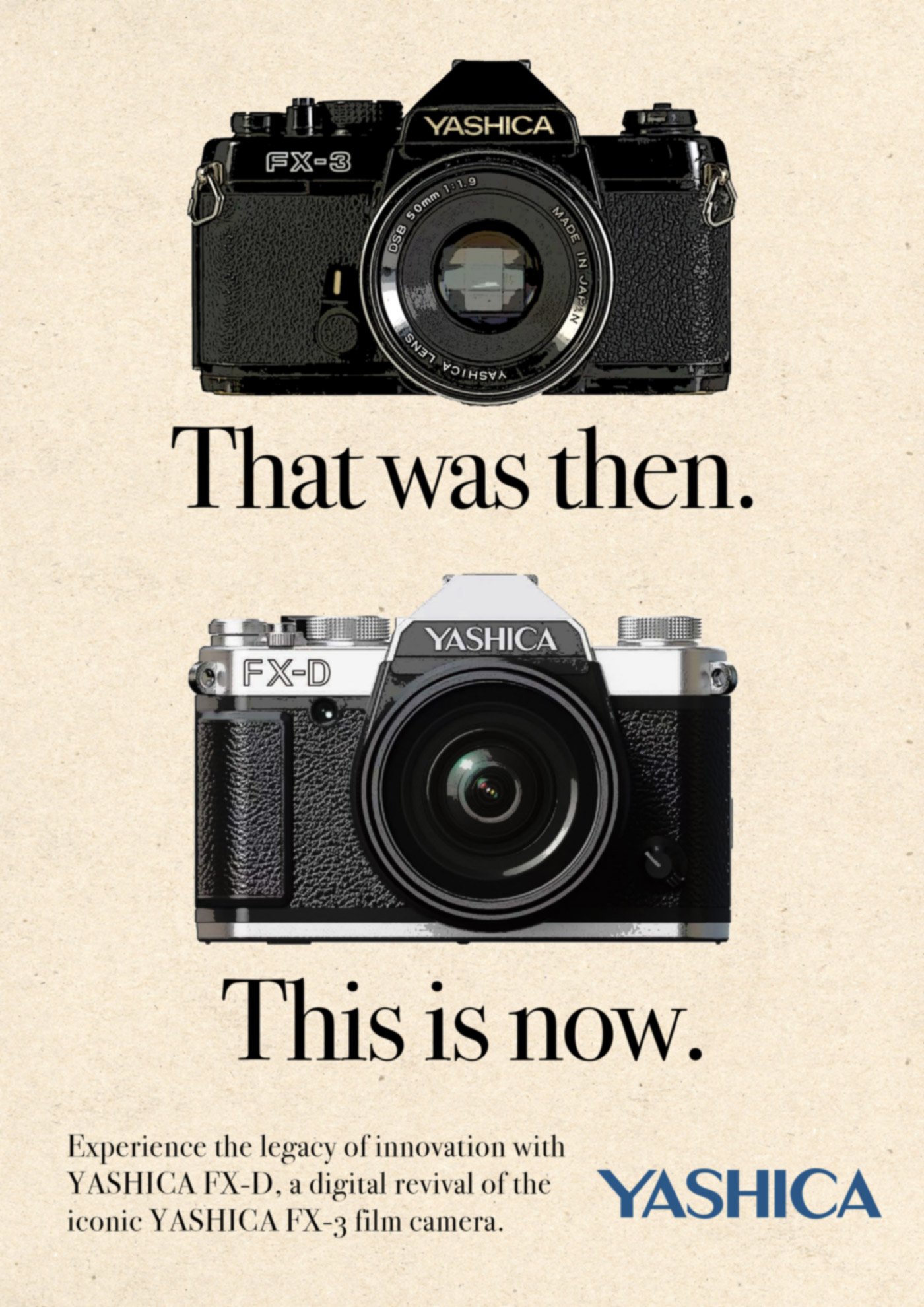

Yashica continues to ride the vintage and retro camera body trend. After the Yashica Y35 digiFilm launched in 2017 and the Yashica City compact cameras announced last February, the Chinese company with Japanese roots is now introducing 3 new cameras in its Yashica FX-D series.
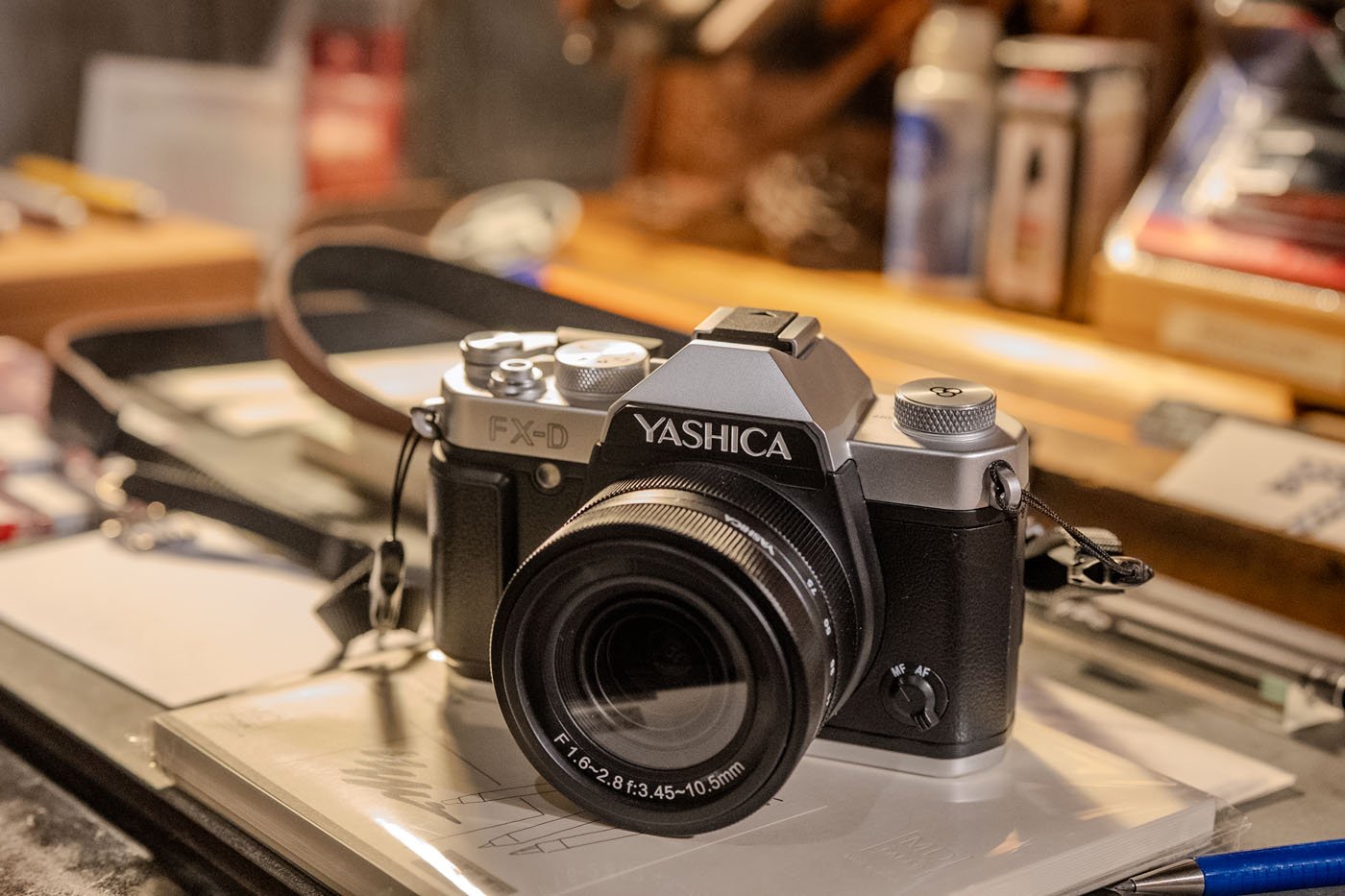

Vintage-style body, faux pentaprism, wind lever — the FX-D 100, FX-D 300, and FX-D S300 are clearly inspired by the 1980s Yashica FX-D SLRs. A set of six “film” simulations (Ruby 60s, Sapphire 70s, Yashica 400, Golden 80s, and two B&W looks) promises nostalgia without film, a growing trend.
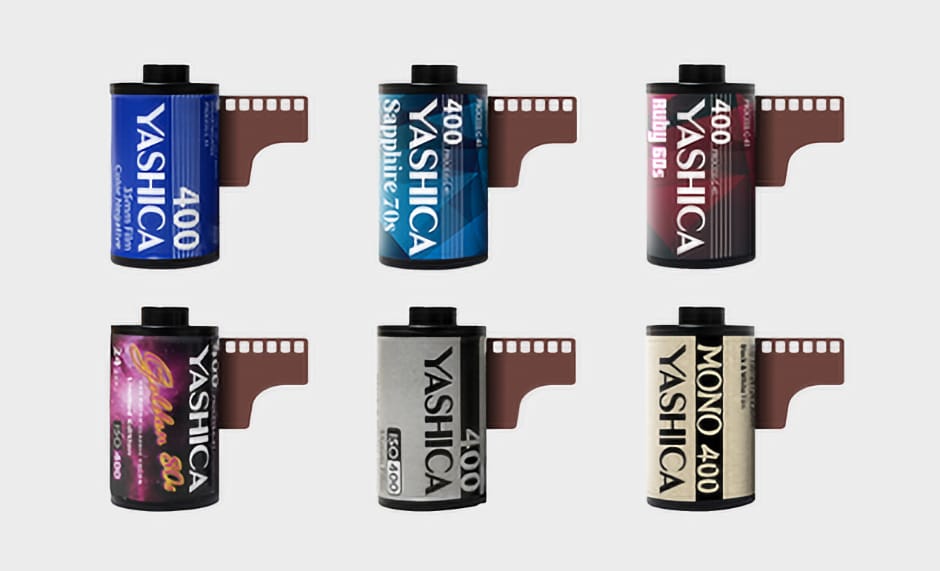

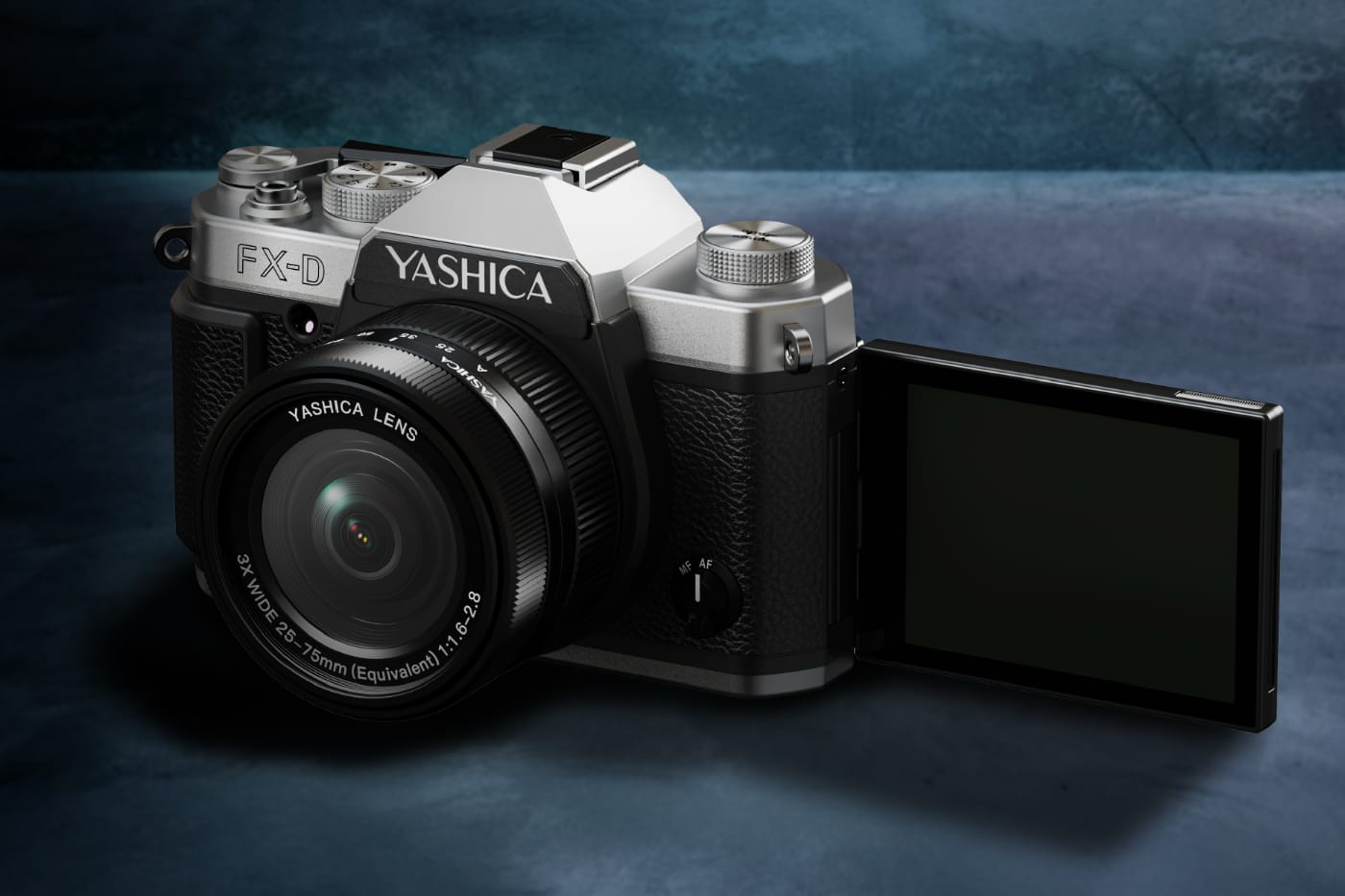

Declared objective: “the charm of analog, the ease of digital”, notably through JPEG-only shooting for instant sharing. Yashica is targeting photographers drawn to the retro feel rather than raw performance — a positioning reminiscent of what Fujifilm offers with the Fujifilm X half, which we reviewed recently.
Technical specifications
The Yashica FX-D comes in three versions, with slightly different specs.
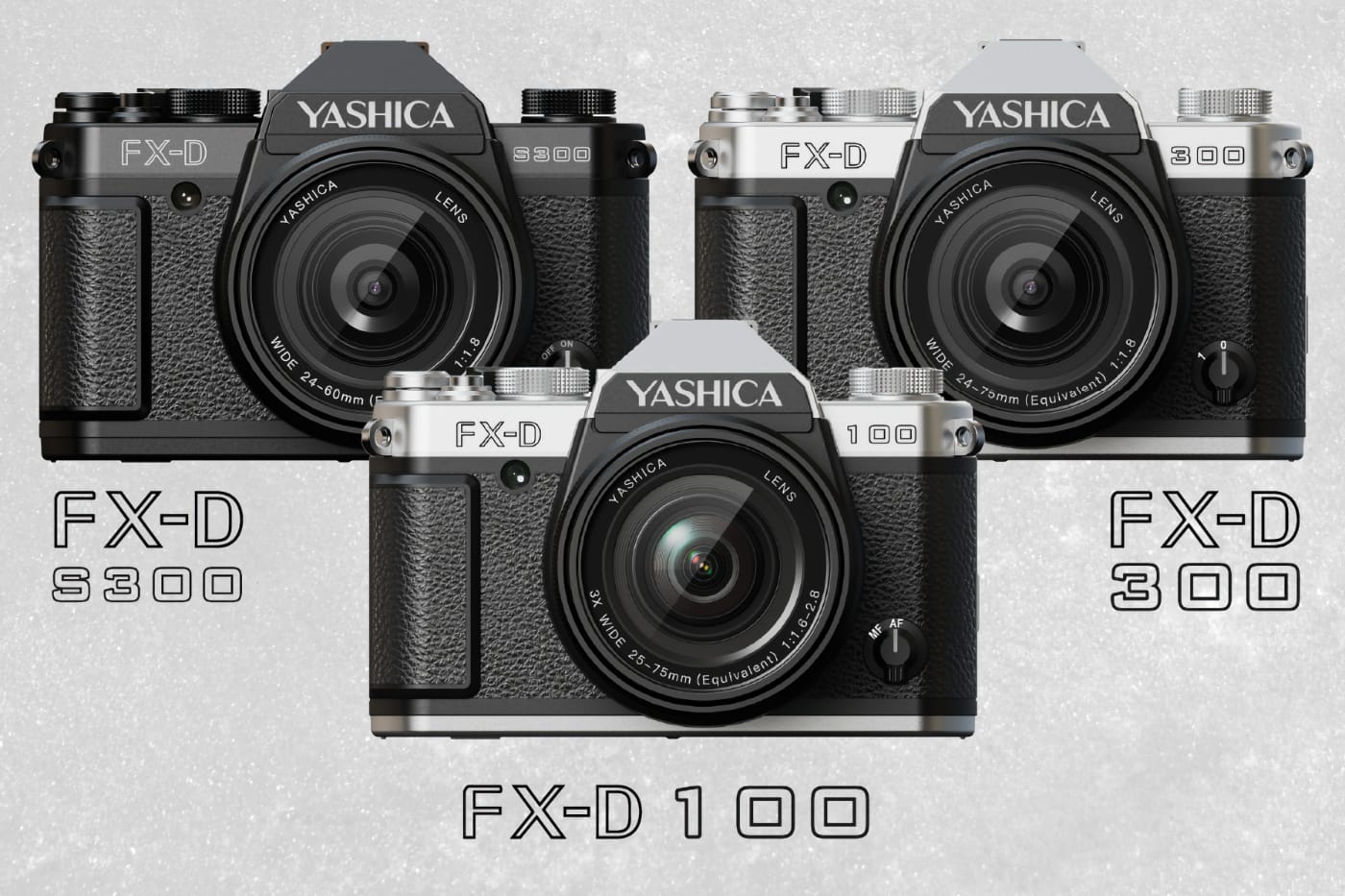

The Yashica FX-D 100 features a very small 1/3.06″ 13 MP sensor (Sony IMX458) in a 4:3 ratio and a 3x optical zoom equivalent to 25-76 mm f/1.6-2.8 full-frame. It’s the only model with a true optical zoom; the other two use digital cropping. The small sensor ensures very deep depth of field and clean results in daylight, but comes with obvious limitations in low light and dynamic range — basically a “pocket compact” wrapped in an SLR-style body.
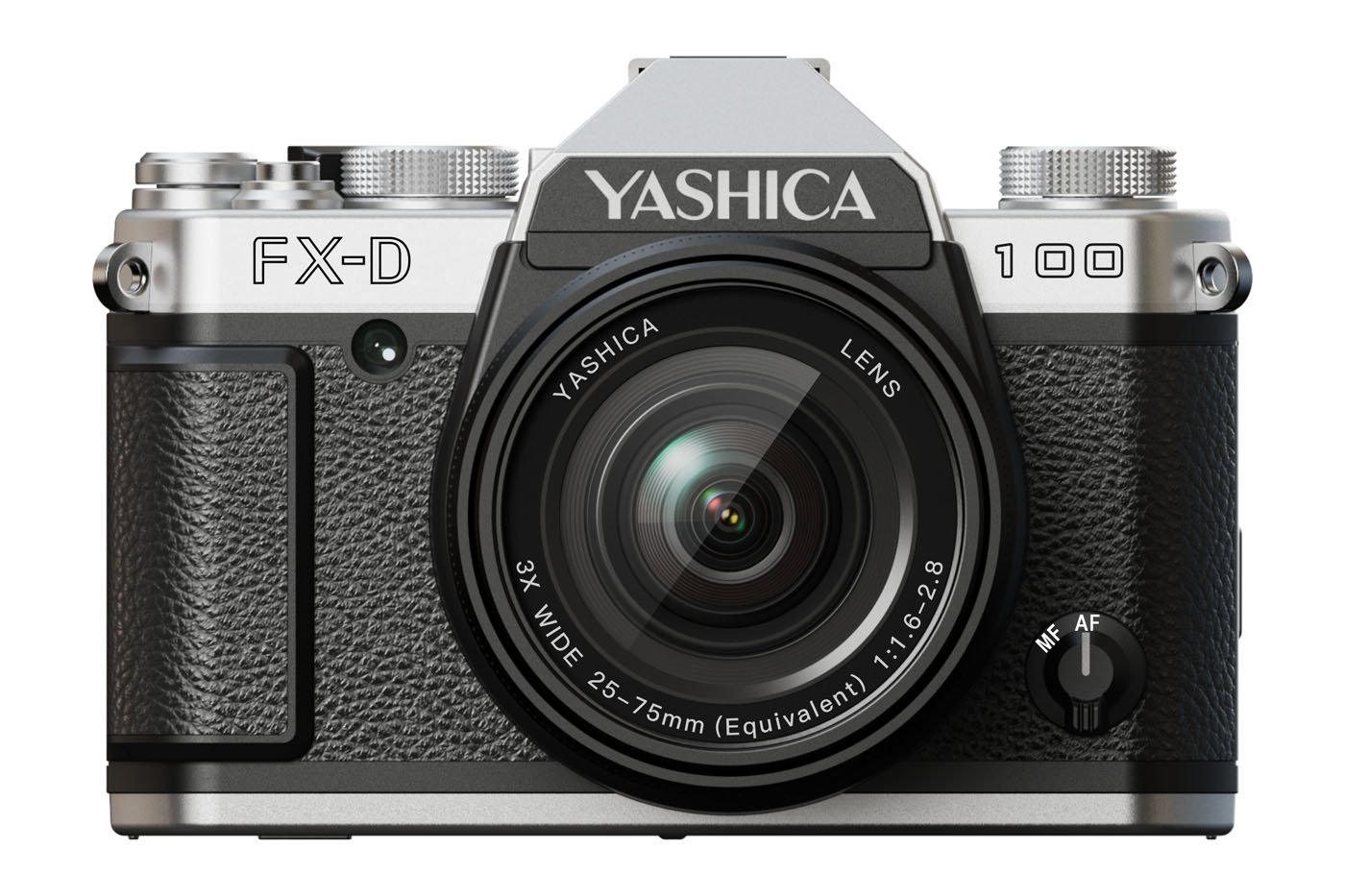

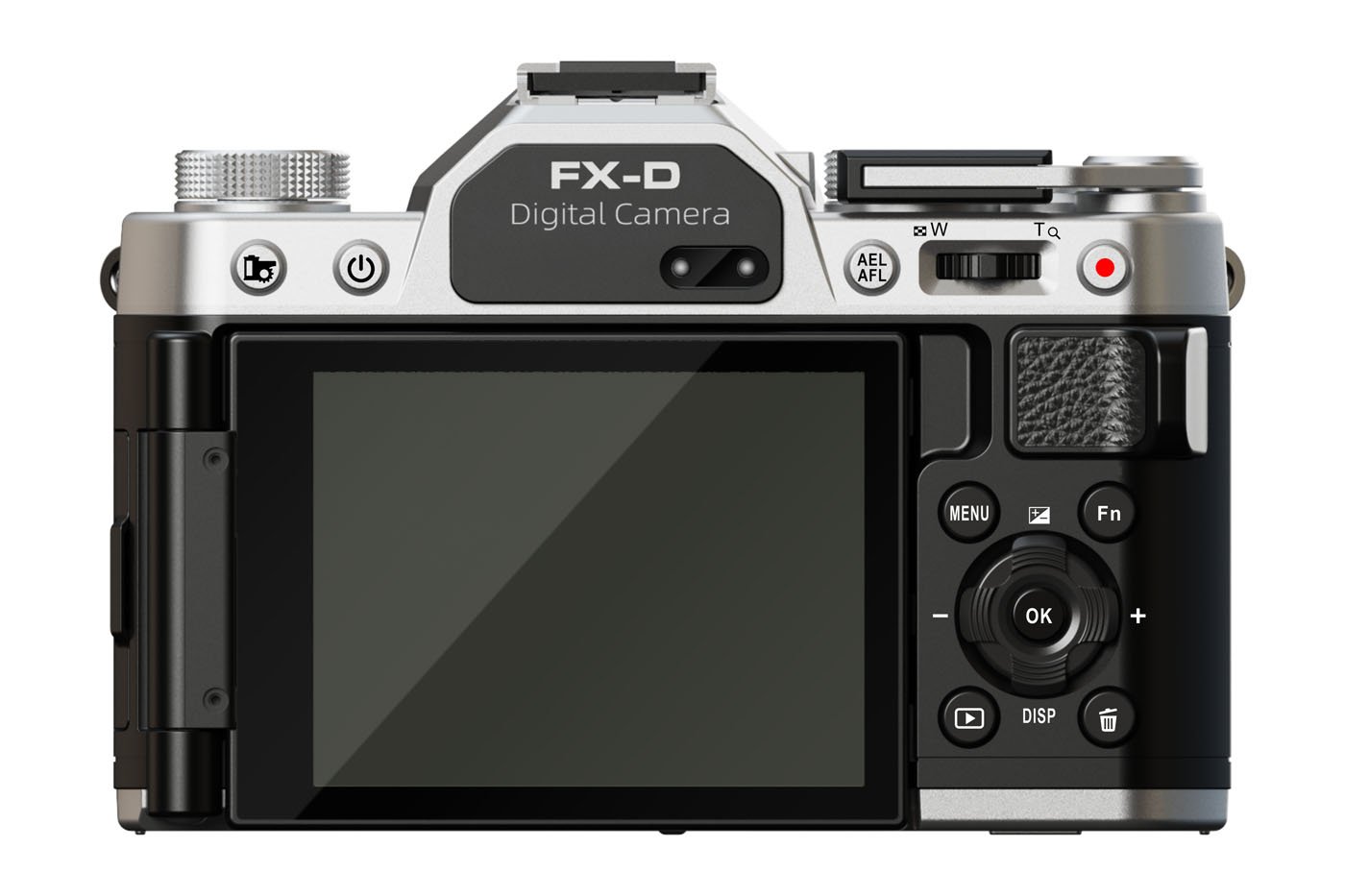

The FX-D 300 drops the zoom in favor of a slightly larger 1/1.56″ 50 MP sensor and a fixed 24 mm f/1.8 stabilized lens. The advertised “zoom” (up to 2.5x) is purely digital, with cropping options to 35 mm (24 MP), 50 mm (12 MP), and 60 mm (8 MP).
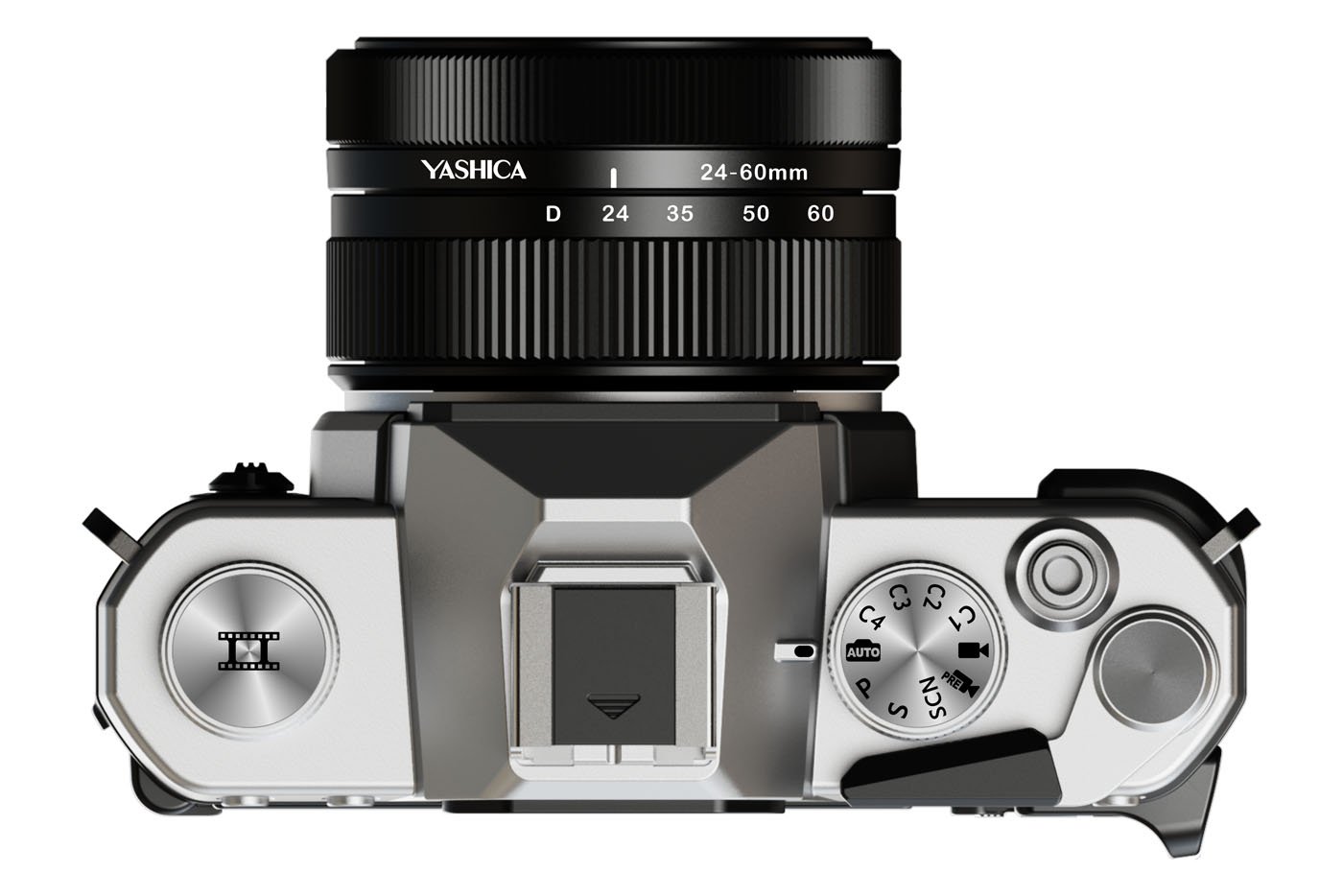

Responding to early criticism, Yashica added the FX-D S300 mid-campaign: it features the same 50 MP sensor and 24 mm f/1.8 stabilized lens as the FX-D 300, but includes a 0.32″ OLED EVF with 1.44 million dots at 120 Hz, housed in the faux pentaprism. While resolution is modest, it improves framing significantly. Other specs remain unchanged, though the price jumps accordingly.
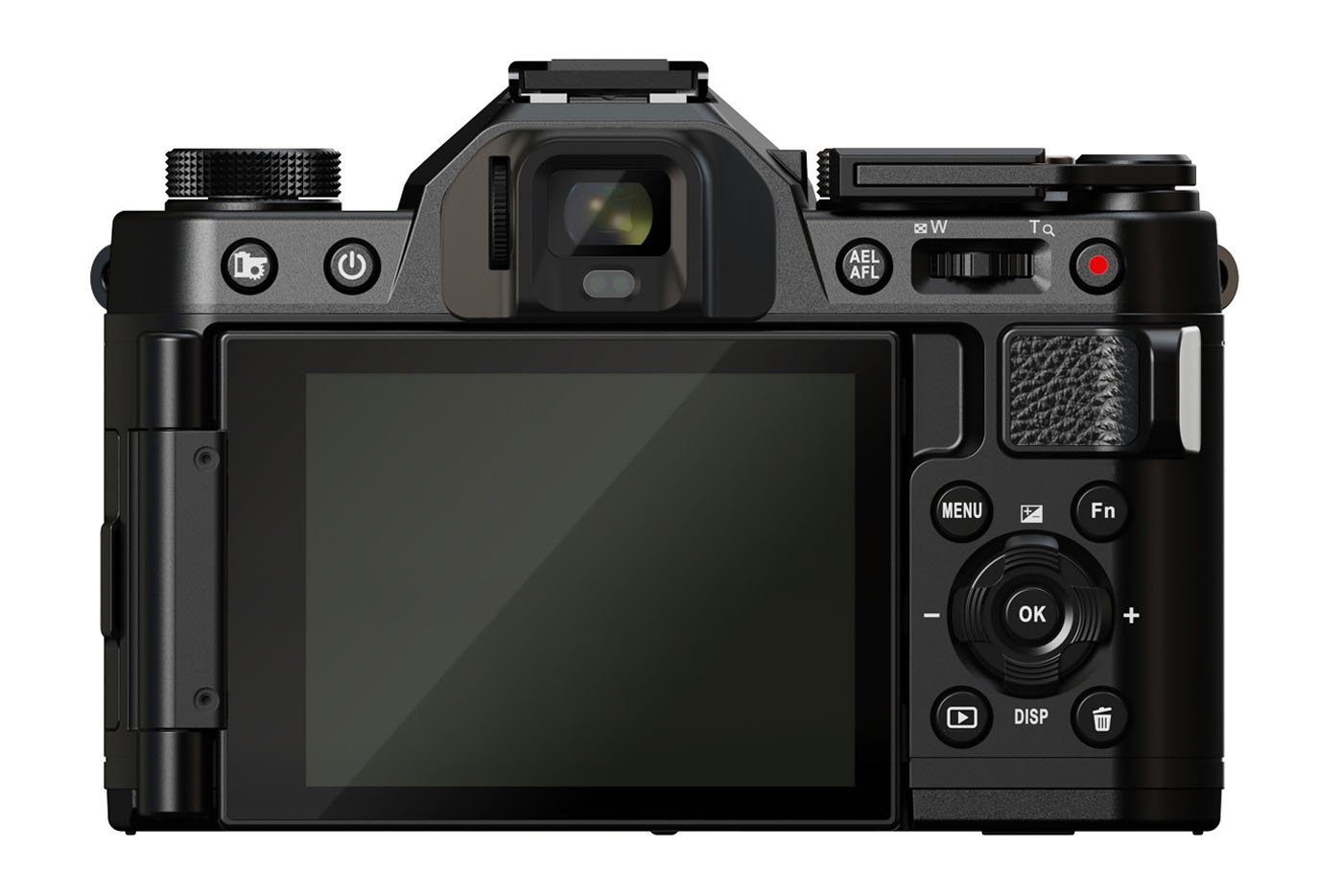

All models share a 2.8-inch screen (640 × 480 px), support JPEG-only image recording, and include a wind lever to advance the frame in simulation mode. They also support 4K 30p video recording.


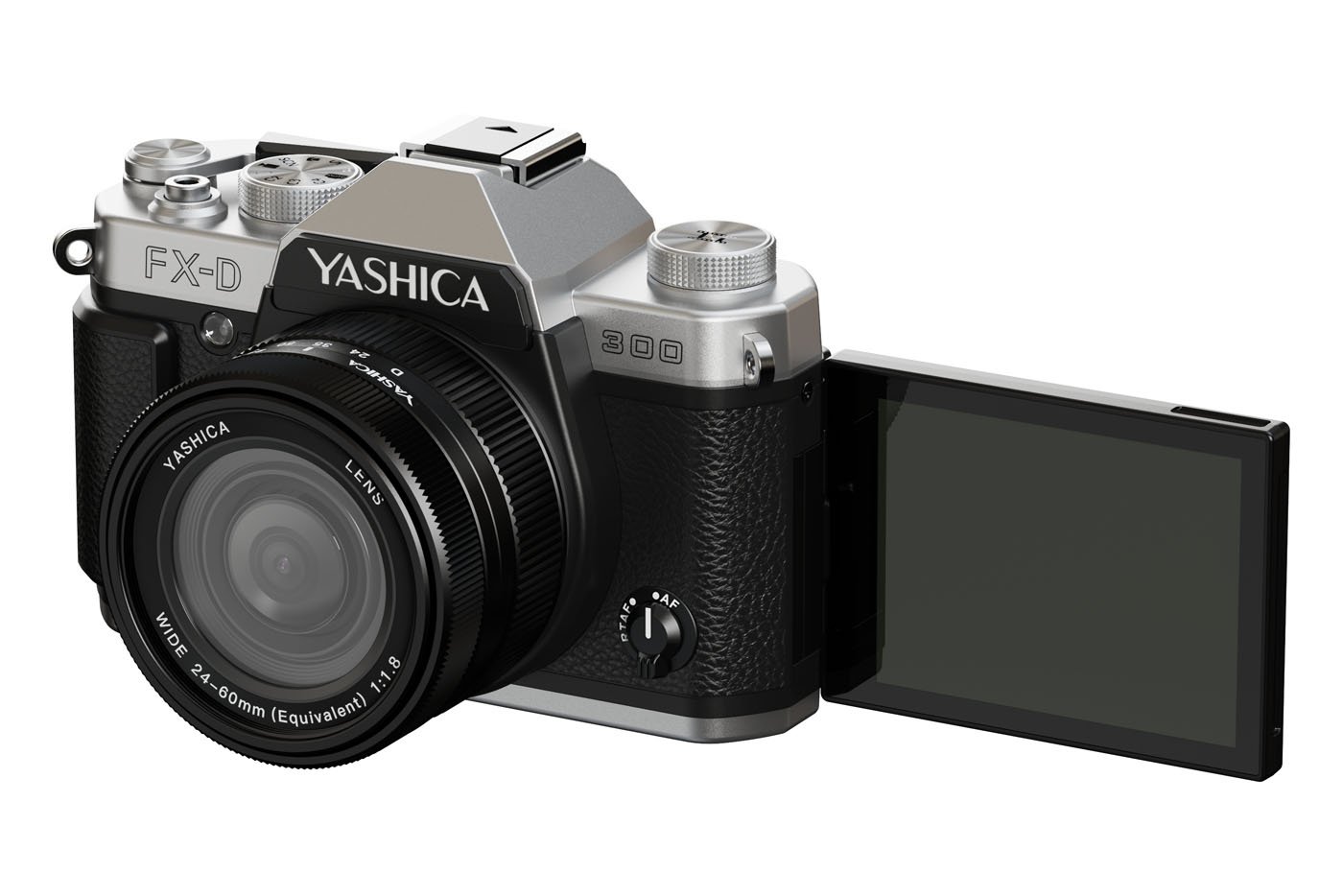

The cameras support UHS-I SD cards. For connectivity, they charge via USB-C, with an integrated battery. They also offer Wi-Fi and Bluetooth and are compatible with the Yashica mobile app.
Here are the technical specifications of the three Yashica FX-D models:
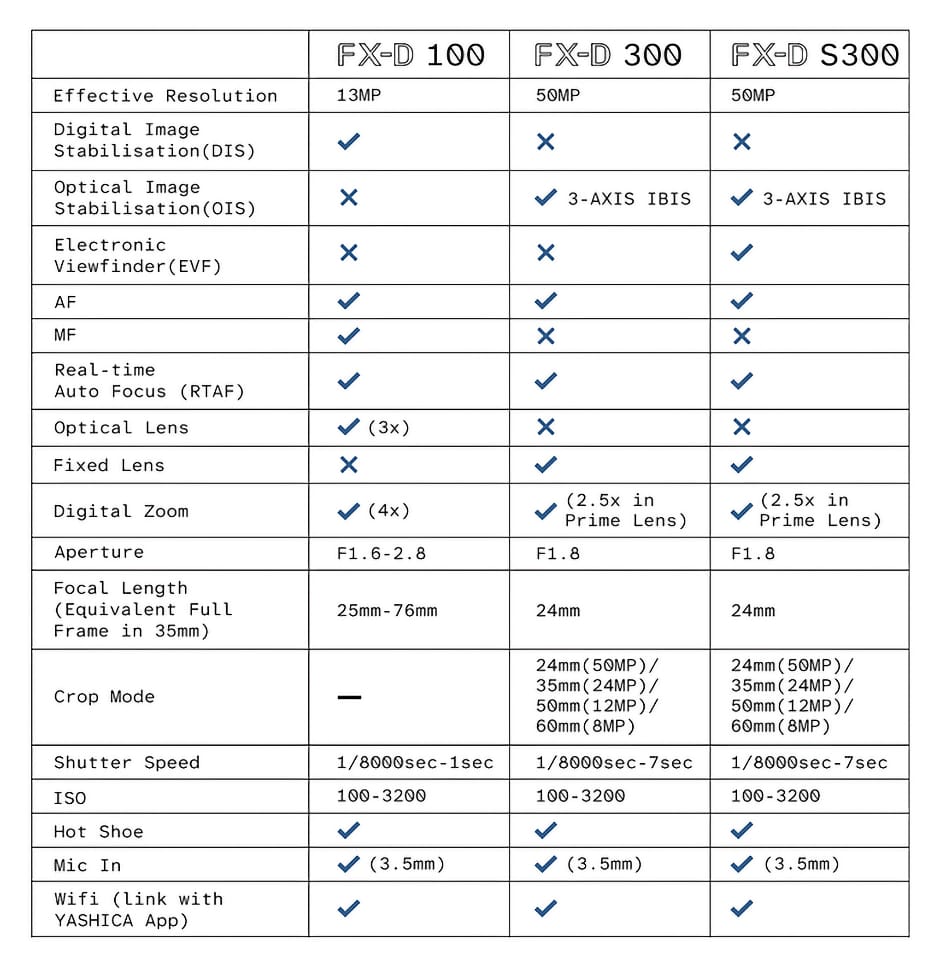

Pricing and availability
The Yashica FX-D 100 is available for $249 (approx. €215), rising to $359 post-campaign. The FX-D 300 is priced at $349 (approx. €300), increasing to $549 later. Finally, the FX-D S300 with EVF is offered at $459 (approx. €395) during the campaign, and $679 afterwards.
The Kickstarter campaign ends on June 30, 2025. Shipping is scheduled to begin in August 2025 for the FX-D 100/300, and in October 2025 for the S300.
Our first impressions
At first glance, Yashica offers a pleasure-driven product: analog SLR styling, manual lever, built-in film simulations. The Kickstarter campaign has already raised over $670,000 with just a few days left.
The FX-D 100 offers a true optical zoom but is limited by a very small smartphone-type sensor. The FX-D 300 delivers higher resolution and stabilization, sacrificing zoom for a fixed focal length and digital cropping. The highly anticipated S300 version adds a viewfinder, but raises the price considerably.
In short, these vintage-style cameras are likely to appeal to film photography enthusiasts, though image quality may prove underwhelming based on their specs. A full review will be needed to confirm this.

